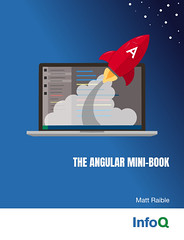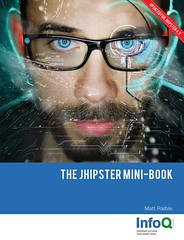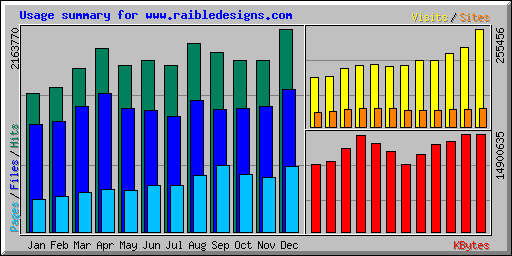Setting up CVS, AppFuse, JSPWiki, Tomcat, MySQL, Apache and Bugzilla on Suse 9.2
I have a few different clients right now. One of them has taked me
with building a Linux box for them, configured with all the standard
stuff you need for developing/testing Java apps. I decided to document
the process in hopes that the next time I do it, it will be a little
less painful. The box had Suse 9.2 Professional installed on it, and
was unlike most Linux boxes I've setup. There was hardly anything setup
on it, not even gcc - which is used to compile/install most Linux-based software. All of the this work was done remotely, using SSH and Cygwin.
- which is used to compile/install most Linux-based software. All of the this work was done remotely, using SSH and Cygwin.
NOTE: This was written after-the-fact, so it might not be up to date. I've tried to remember what I could.
Table of Contents
- [1] Installing CVS
- [2] Installing Tomcat, Ant and MySQL
- [3] Testing installation with Equinox and AppFuse
- [4] Installing JSPWiki
- [5] Installing Apache
- [6] Configuring the Apache Tomcat Connector
- [7] Installing Bugzilla
Installing CVS [#1]
When I first logged into this machine, it had virtually nothing installed. In most cases, when I've installed packages on Linux, I've found it easiest to download the source, run ./configure, make and make install because installing RPMs often gets into strange dependencies that I can never figure out. Luckily, with CVS, I was able to easily install an RPM. I uploaded the RPM for CVS from my Suse 9.2 Professional CD. I then logged in as root and installed it using "rpm -i cvs-1.11.14-20.i586.rpm".
I also setup CVSSpam , which can be configured to send us e-mails when someone commits. If you read the CVSSpam manual
, which can be configured to send us e-mails when someone commits. If you read the CVSSpam manual , you'll see that you can checkout the CVSROOT module and configure settings in there.
, you'll see that you can checkout the CVSROOT module and configure settings in there.
Installing Tomcat, Ant and MySQL [#2]
Before installing Tomcat and Ant, I had to install the JDK. There was
already a JDK installed, but it was IBM's and I've had more success
with Sun's. I downloaded the "self-installing binary" (v. 1.4.2_06)
from http://java.sun.com/j2se/1.4.2/download.html and installed it in the /usr/java
directory. I then created a jdk-1.4.2 symlink to the "j2sdk1.4.2_06"
directory in this same directory. Next, I changed the Java-related
environment variables in /etc/profile.d/alljava.sh to point to /usr/java/jdk1.4.2.
and installed it in the /usr/java
directory. I then created a jdk-1.4.2 symlink to the "j2sdk1.4.2_06"
directory in this same directory. Next, I changed the Java-related
environment variables in /etc/profile.d/alljava.sh to point to /usr/java/jdk1.4.2.
Installing Tomcat and Ant was fairly easily. I just downloaded the binaries and unzipped them into the following directories.
- Ant 1.6.2
 - /opt/tools/apache-ant-1.6.2
- /opt/tools/apache-ant-1.6.2
- Tomcat 5.0.30
 - /opt/tools/jakarta-tomcat-5.0.30
- /opt/tools/jakarta-tomcat-5.0.30
I then created "ant" and "tomcat" symlinks in the /opt/tools directory to point to these installation. Next, I created environment variables for ANT_HOME and CATALINA_HOME by appending the following to the bottom of the /etc/profile file:
# # Java Development Enviroment Variables # export TOOLS_HOME=/opt/tools export ANT_HOME=$TOOLS_HOME/ant export CATALINA_HOME=$TOOLS_HOME/tomcat export PATH=$ANT_HOME/bin:$CATALINA_HOME/bin:$PATH
For MySQL, I installed version 4.1.7 using an RPM . I created /etc/my.cnf file with the following settings - so AppFuse/UTF-8 would work, as well as Transactions:
. I created /etc/my.cnf file with the following settings - so AppFuse/UTF-8 would work, as well as Transactions:
[mysqld] default-table-type=innodb default-character-set=utf8
Testing installation with Equinox and AppFuse [#3]
After installing Ant, Tomcat and MySQL, I was able to
successfully checkout Equinox (and AppFuse
(and AppFuse ) into my home directory and run all tests against Tomcat.
) into my home directory and run all tests against Tomcat.
One thing I did have to change in the default AppFuse setup was the MySQL Driver. Suse uses IPv6, which doesn't work with the current
JDBC Driver in AppFuse 1.7 (or prior). You can get the latest one at http://dev.mysql.com
with the current
JDBC Driver in AppFuse 1.7 (or prior). You can get the latest one at http://dev.mysql.com .
.
Installing JSPWiki [#4]
Installing and configuring JSPWiki was fairly easy. I downloaded version 2.1.115-alpha ,
extracted its contents and renamed JSPWiki.war to wiki.war. Then I
copied it to $CATALINA_HOME/webapps. After Tomcat expanded it, I
modified the $CATALINA_HOME/webapps/wiki/WEB-INF/jspwiki.properties file and changed a few settings:
,
extracted its contents and renamed JSPWiki.war to wiki.war. Then I
copied it to $CATALINA_HOME/webapps. After Tomcat expanded it, I
modified the $CATALINA_HOME/webapps/wiki/WEB-INF/jspwiki.properties file and changed a few settings:
jspwiki.fileSystemProvider.pageDir = /opt/tools/tomcat/webapps/wiki/data jspwiki.basicAttachmentProvider.storageDir = /opt/tools/tomcat/webapps/wiki/data/files jspwiki.translatorReader.allowHTML = true jspwiki.templateDir = blueman
I have a custom template that I use for most clients. It's called "blueman" and I downloaded it and extracted it into the $CATALINA_HOME/webapps/wiki/templates directory. I also copied the sample pages that come with JSPWiki into the /opt/tools/tomcat/webapps/wiki/data directory.
it and extracted it into the $CATALINA_HOME/webapps/wiki/templates directory. I also copied the sample pages that come with JSPWiki into the /opt/tools/tomcat/webapps/wiki/data directory.
Installing Apache [#5]
Installing Apache was the hardest part of this whole setup. Not because the installation was hard, but figuring out how to do it was. There are no pre-built binaries for Apache. I tried to install RPMs, but dependency failures kept happening and I couldn't get them resolved. I couldn't compile from source because there was no C-compiler installed. After much googling and a lot of research, I discovered I could change where YaST looked for its installation files. The default was set to look on the CDs.
To change the location, I typed "yast2", selected Software >> Change Source of Installation, and added a new FTP Source with the following settings:
Protocol: FTP Server Name: ftp.suse.com Directory on Server: pub/suse/i386/9.1 (I tried 9.2, but it didn't resolve) Authentication: anonymous
I then turned off the other 2 CD sources. When I first did this, I used "yast" rather than "yast2" and it didn't seem to have any effect. In fact, I think I rebooted before I even tried "yast2", but then I read about it on some website, tried "yast2" and found I could easily install a number of programs using this utility.
After configuring the new source, I went to Software >> Installed and Remove Software and searched for "apache2". I selected the following modules to install:
- apache2
- apache2-jakarta-tomcat-connectors
- apache2-mod_perl
- apache2-prefork
- apache2-worker
The last 2 are required by apache2. After installing all of these, Apache 2.0.49 was installed and I received a page when I navigated to the host's IP address. It turned out to be an error page, but only because there was no index.html file in /srv/www/htdocs. I created a symlink from htdocs/index.html to $CATALINA_HOME/webapps/ROOT/index.jsp (a simple static page) to solve this issue.
Configuring the Apache Tomcat Connector [#6]
I found most of the information for this section from reading the /usr/share/doc/packages/apache2-jakarta-tomcat-connectors/README.SuSE file. I've used both mod_jk and mod_jk2 in the past, but since this file said "The module JK2 is only experimental in this package", I opted to configure the mod_jk connector. Below are the steps I went through to configure Apache2 to connect to Tomcat 5.0.30 on Suse 9.2:
1. Create a file named jk.conf in the /etc/apache2/conf.d
directory with the contents below. This file contains the URI mappings
to tell Apache what URLs to direct to Tomcat. Many of the samples I found go a bit further and map the full directories in Tomcat, but
since the apps deployed are entirely self-contained, it seems to make
more sense to just do the JkMount.
I found go a bit further and map the full directories in Tomcat, but
since the apps deployed are entirely self-contained, it seems to make
more sense to just do the JkMount.
<IfModule mod_jk.c>
JkWorkersFile /etc/apache2/workers.properties
JkLogFile /opt/tools/tomcat/logs/mod_jk.log
# Log level to be used by mod_jk
JkLogLevel error
# AppFuse - the 2nd line eliminates the need for a
# trailing slash on the URL
JkMount /appfuse/* ajp13
JkMount /appfuse ajp13
# Equinox - the 2nd line eliminates the need for a
# trailing slash on the URL
JkMount /equinox/* ajp13
JkMount /equinox ajp13
# JSPWiki - the 2nd line eliminates the need for a
# trailing slash on the URL
JkMount /wiki/* ajp13
JkMount /wiki ajp13
</IfModule>
After configuring Apache+Tomcat, I blocked port 8080 on the firewall and changed AppFuse to use port 80 as its default port. This is easy to do - just create a .build.properties file in your home directory with the following contents:
http.port=80
Then run "ant clean deploy". This will affect all of your AppFuse-based projects.
2. Create an /etc/apache2/workers.properties file with the following contents:
# # You should configure your environment slash... ps=\ on NT and / on UNIX # and maybe something different elsewhere. # ps=/ # # The workers that your plugins should create and work with # # Add 'inprocess' if you want JNI connector worker.list=ajp13 #------ DEFAULT ajp13 WORKER DEFINITION ------------------------------ #--------------------------------------------------------------------- # # # Defining a worker named ajp13 and of type ajp13 # Note that the name and the type do not have to match. # worker.ajp13.port=8009 worker.ajp13.host=localhost worker.ajp13.type=ajp13 # # Specifies the load balance factor when used with # a load balancing worker. # Note: # ----> lbfactor must be > 0 # ----> Low lbfactor means less work done by the worker. worker.ajp13.lbfactor=1 # # Specify the size of the open connection cache. #worker.ajp13.cachesize
3. Add the module "jk" to the list of apache2 modules APACHE_MODULES. It can be done by YaST in the "Editor for /etc/sysconfig Files" or by editing the file /etc/sysconfig/apache2. If you have done it by editing the file. The apache2 configuration has to be updated by the command:
SuSEconfig --module apache2
4. Make sure the server tomcat is stopped.
5. Change CATALINA_BASE to "/opt/tools/tomcat". It can be done by YaST in the "Editor for /etc/sysconfig Files" or by editing the file /etc/sysconfig/j2ee. (I don't think this is necessary since I didn't install Tomcat using YaST).
6. Start Tomcat and restart Apache using "rcapache2 restart".
Installing Bugzilla [#7]
To install Bugzilla, I downloaded the 2.18rc3 version and extracted it to the /opt/tools directory. I then moved it to /opt/tools/bugzilla
and cd'd into it. Then I ran "./checkconfig.pl" and proceeded to
install the Perl modules it told me to. Then I modified the
"localconfig" file in this directory. I changed the "$webservergroup"
to be "" since I couldn't figure out what group Apache's files were
supposed to belong too. I also changed the "$db_user" to be "root"
since I couldn't get the "bugs" user to work. The group and db_user are
things that I still need to fix - any advice is appreciated. I changed the "$webservergroup" to be "www" (thanks John Norman) and I had to use old_password() on the "bugs" user to get bugzilla to work with MySQL 4.1.7.
version and extracted it to the /opt/tools directory. I then moved it to /opt/tools/bugzilla
and cd'd into it. Then I ran "./checkconfig.pl" and proceeded to
install the Perl modules it told me to. Then I modified the
"localconfig" file in this directory. I changed the "$webservergroup"
to be "" since I couldn't figure out what group Apache's files were
supposed to belong too. I also changed the "$db_user" to be "root"
since I couldn't get the "bugs" user to work. The group and db_user are
things that I still need to fix - any advice is appreciated. I changed the "$webservergroup" to be "www" (thanks John Norman) and I had to use old_password() on the "bugs" user to get bugzilla to work with MySQL 4.1.7.
Next, I edited the /etc/apache2/default-server.conf file so "/bugzilla" would be recognized. I added the following right after the configuration for the "/icons" directory.
Alias /bugzilla "/opt/tools/bugzilla"
<Directory "/opt/tools/bugzilla">
Options FollowSymLinks Indexes Includes +ExecCGI
AllowOverride All
DirectoryIndex index.cgi
Order allow,deny
Allow from all
</Directory>
Then, at the bottom of the file, I added:
AddHandler cgi-script .cgi
I restarted Apache and I kept getting an error that Apache couldn't open the /opt/tools/bugzilla/.htaccess file. I tried running "chmod +r", "chmod 644", "chmod 755" and even "chmod 777", but no luck. Finally, I googled and found that running "chmod 701 /opt/tools/bugzilla" solved the problem.
Hopefully this will help anyone else trying to setup these tools on a remote Suse box.



 I think I'll wait until January to make this a mandatory rule.
I think I'll wait until January to make this a mandatory rule.